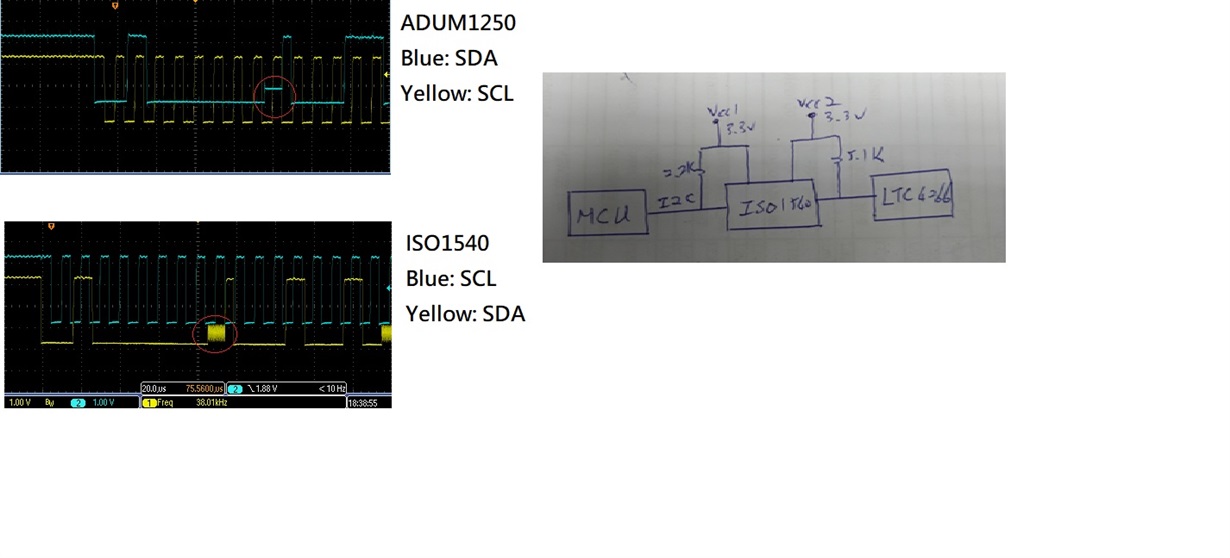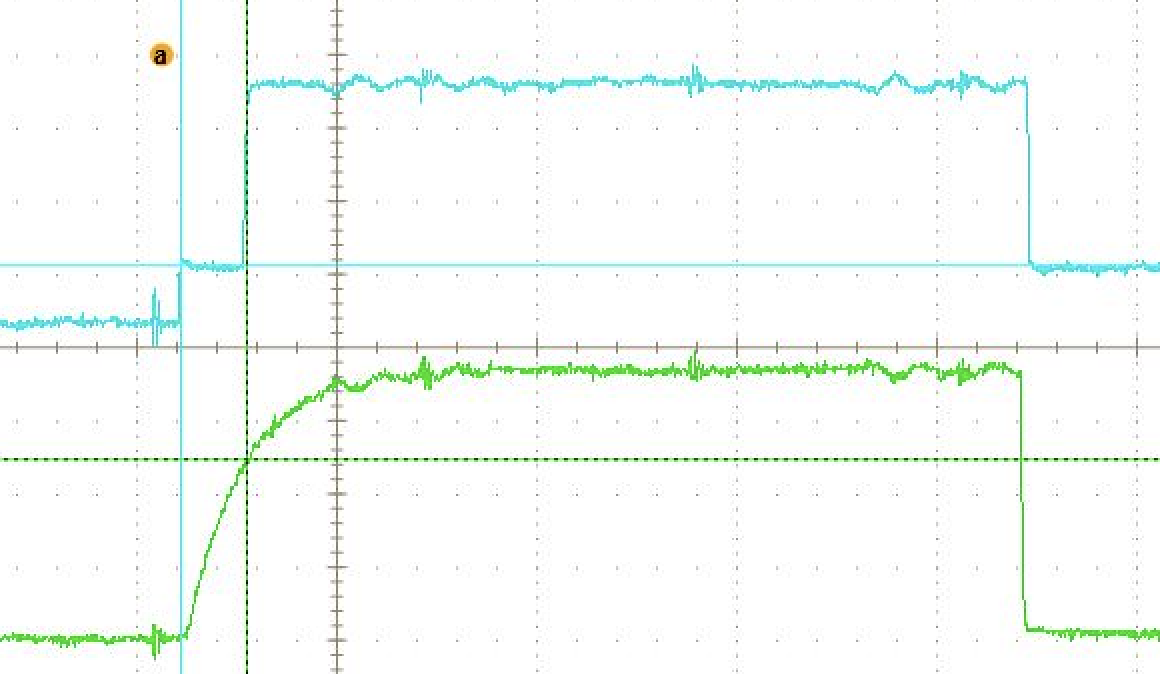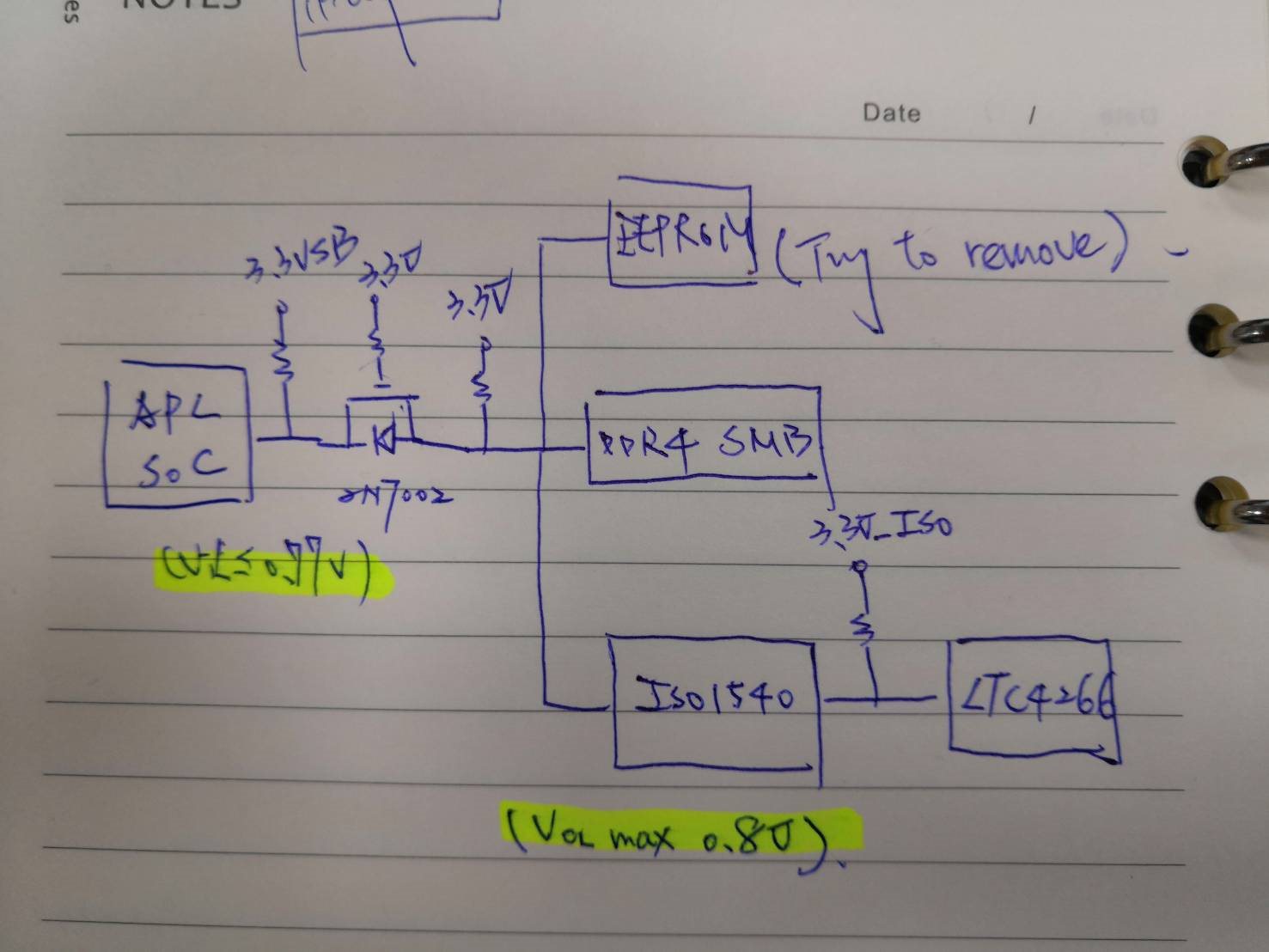Dear Sir,
I would use ISO1540 to replace ADUM1250, but face a issue as below waveform
you can see red circle_ ACK signal :
ADUM1250 is very stable -> SMBus OK
ISO1540 have some glitch -> SMBus Fail.
Please you kindly help review & provide some suggestion.
Thanks!
Steven






